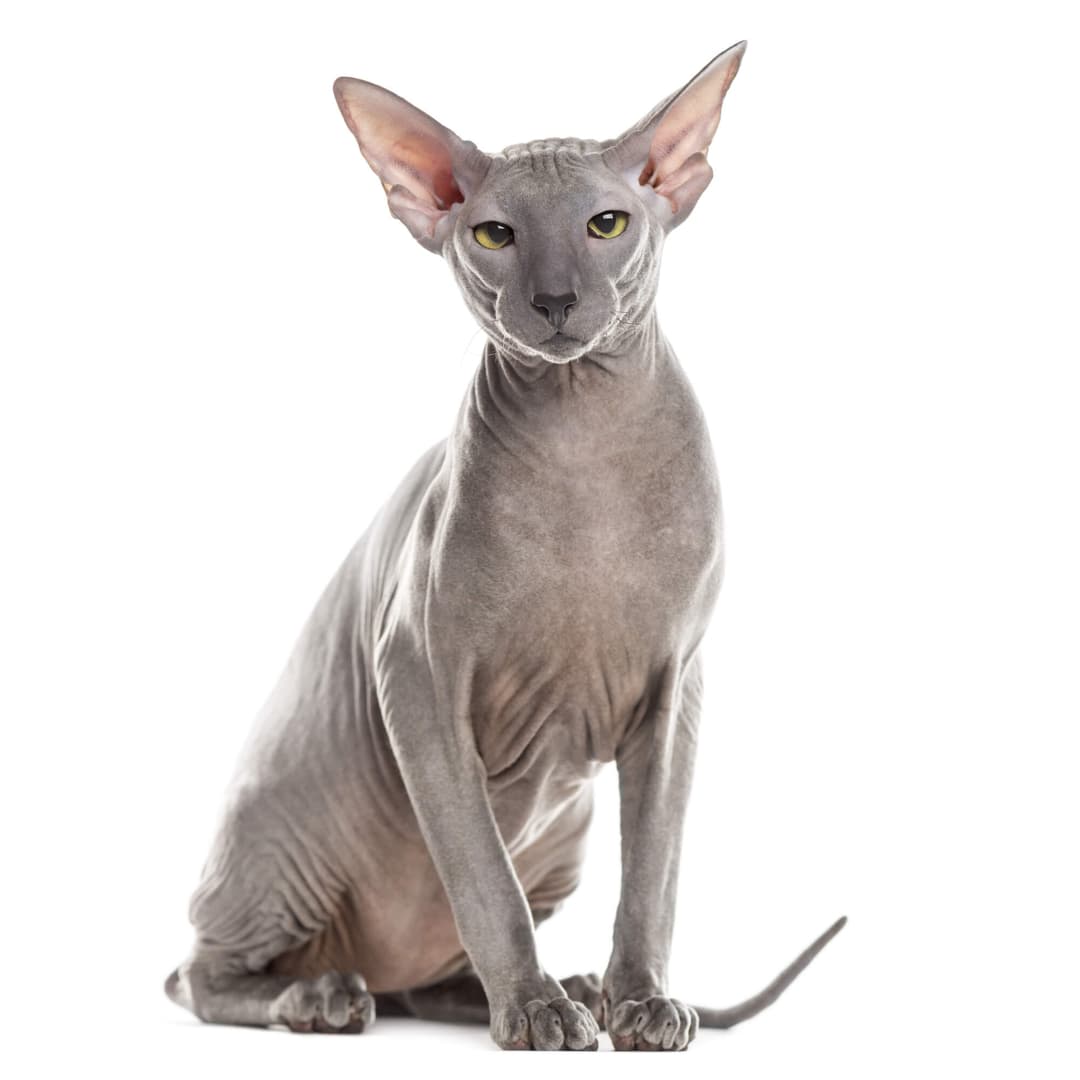Discover your cat's connection to this breed and 20 others


Discover your cat's connection to this breed and 20 others



Peterbalds are extremely loyal cats with a sweet and affectionate nature. Known for playing “host” to guests in the home, they get along just as well with strangers as they do with the children, pets, and other family members in their home.
The Peterbald is a cat breed that originated in St. Petersburg, Russia. These unusual kitties are carriers of a hair-loss mutation which results in them having either a bald, flocked, velour, brush (unique to this breed), or straight coat that can come in a variety of colors and patterns. Peterbald cats can be born hairless, or born with a coat where hair length and texture changes over time. In physical appearance they are said to closely resemble the Oriental Shorthair, with a slim and muscular body, almond-shaped eyes, and large, pointed ears.
In 1994, Olga S. Mironova conducted experimental breeding between a male Don Sphynx (Donskoy) and a female Oriental Shorthair. The first two litters produced four Peterbald kittens. These four kittens are considered the founders of the breed.
Peterbalds are sweet and affectionate little cats. Famous for their dog-like loyalty toward their favorite humans, they will often follow you around the house to be near you as much as possible. Their energetic and curious nature is complemented by their peaceful and docile demeanor, which makes them well-suited to households with children and other pets.
Though all cats face a certain risk of developing health issues that may be genetically inherited, there are currently no known genetic health conditions tightly associated with this particular breed.
Peterbald fur can change over the years. Peterbalds can be born bald or with fur (which can be flock, velour, brush, or straight). But Peterbalds born with fur often lose their hair in their early years of life, or their coat often changes in texture and length.
“Brush” fur is unique to the Peterbald breed. Peterbalds inherited the hair-losing gene from one of their parent breeds, Don Hairless. However, they still have a few coat variants, one of which is called brush. This type of fur is short and wiry, and it is often described to feel like felt.
Although hairless, Peterbalds are not necessarily hypoallergenic. It is often believed that cats with little to no fur may be hypoallergenic. However, allergic people don't react to feline hair, but rather to allergens produced in the saliva. While some Peterbalds may produce less allergens than others, this is not a given for the breed.
There might be a reason behind your Peterbald's sweet nature. Just like it has been speculated for Sphynx cats, there are several theories explaining why hairless cats tend to be exceptionally furriendly. It is possible that these cats are so affectionate because their kittens are generally kept with the Queen for longer periods of time than other cat breeds or because the friendlier cats are more likely to be selected for breeding. Other experts believe that they are affectionate because they rely on us to keep warm.
Peterbalds eat more than an average cat breed. Similarly to other hairless breeds, Peterbalds have a very fast metabolism and need more food than average cats. It is recommended to consult with your cat's vet to make sure you can design a healthy and well-balanced plan for your Peterbald.
The International Cat Association (TICA) “Introduction to the Peterbald”
Recommended by top vets with decades of experience
21 breeds
64 genetic health markers
50 genetic trait markers
